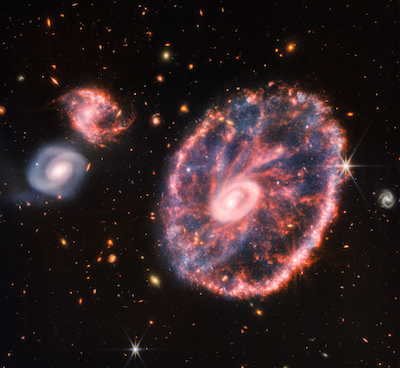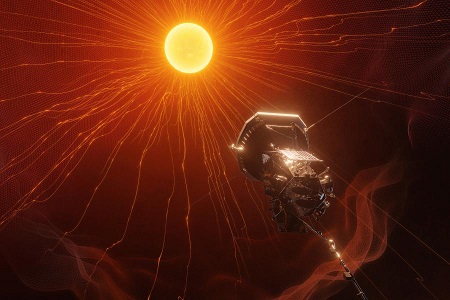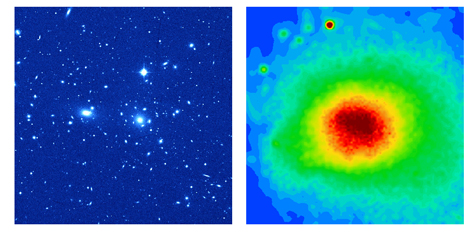Past Events
Accurate Electronic Structure Calculations for Heavy Elements
Abstract: The presentation will be focused on the development and application of relativistic
electronic-structure methods aiming to extend accurate quantum chemistry to heavy
Playing nonlocal games with phases of quantum matter
Abstract: Nonlocal games yield an unusual perspective on entangled quantum states. The defining property of such games is that a set of players in joint possession of an entangled state can win the game with higher probability than is allowed by classical physics.
Hot band sound
Abstract: Chaotic lattice models at high temperature are generically expected to exhibit diffusive transport of all local conserved charges. Such diffusive transport is usually associated with overdamped relaxation of the associated currents. We argue that by appropriately tuning the inter-particle interactions, lattice models of chaotic fermions at infinite temperature can be made to cross over from an overdamped regime of diffusion to an underdamped regime of "hot band sound".
GTOSat: Venturing where no CubeSat has gone before
CubeSats are NASA’s newest—and smallest—class of spacecraft. These nanosatellites, often about the size of a cereal box, enable rapid, low-cost exploration of the space environment around Earth and beyond.
Topological Superconductivity in Superconductor-Semiconductor Hybrids
Abstract: Topological superconducting nanowires are characterized by Majorana zero modes, which can form the basis of topological qubits. In this talk, I will present some recent theoretical and experimental progress on these systems.
==========
Coffee, tea and cookies will be available in G1B31 (across from G1B20) from 3:30 - 3:50 p.m.
Physics Colloquia are held Wednesdays at 4:00 p.m. in the JILA Auditorium.
Microfluidics for quantitative, high-throughput biophysics and biochemistry
Lab Website: http://www.fordycelab.com
Synopsis: The Fordyce lab works to understand protein-DNA binding interactions to understand and engineer pathways related to metabolism and protein signaling. The lab focuses on obtaining the thermodynamic and kinetic constants of these molecular interactions using microfluidics and extensive hardware (MITOMI and HT-MEK, MRBLEs, Dropception)
Ultrafast lasers based on Cr2+-doped ZnS and ZnSe
Abstract: The advent of femtosecond Ti:Sapphire lasers has enabled transformative advances in high field nonlinear optics and intense laser-matter interaction physics. Theories predict that many high field phenomena such as high harmonic generation favor middle IR laser wavelengths in terms of extending the high energy cutoff. The invention of middle IR Cr2+-doped ZnS and ZnSe lasers in the 1996s by the research team of William Krupke at the Lawrence Livermore National Laboratory has coincided with an explosive progress of ultrafast Ti:Sapphire laser technology.
Photosynthesis and Photoprotection in Whole Plants and Natural Environments
Please reach out to chemistry@colorado.edu with any questions.
Candidate for a passively-protected quantum memory in two dimensions
Abstract: An interesting problem in the field of quantum error correction involves finding a physical system that hosts a "passively-protected quantum memory,'' defined as an encoded qubit coupled to an environment that naturally wants to correct errors.
Quantum spacetime and quantum information
Abstract: How quantum mechanics governs space, time and gravity is a longstanding mystery. Inspired by properties of black holes, recent progress has been made relating quantum spacetime to properties of quantum information and quantum computation such as entanglement entropy, computational complexity and quantum error-correcting codes. I will review some of these developments and discuss some of my own work on geometric realizations of measures of entanglement.
==========
Ribosome ubiquitination and translation control during oxidative stress
Lab Website: https://sites.duke.edu/silvalab/
Synopsis: The main goal of the Silva lab is to understand ubiquitin pathways in response to the oxidative stress response pathway with the goal being to develop ubiquitin centered therapies to counter cancer cells. The lab uses molecular biology tools, protein biochemistry, proteomics, structural biology, and next generation sequencing to investigate ubiquitination in yeast cells.
Mary Shelley's Frankenstein ~ The Ethics of Science
Master storyteller Susan Marie Frontczak, playing the part of Mary Shelley, tells how the famous and familiar story of Dr. Frankenstein's creature is related to ethical issues that arise when scientific pursuits introduce unexpected results.






